Dorothea Lange
"One should really use the camera as though tomorrow you'd be stricken blind."
Dorothea Lange is a renowned American documentary photographer whose powerful images captured the human face of the Great Depression, World War II, and other significant events in American history. Her photographs not only helped to define the documentary photography genre but also played a crucial role in shaping public perception and government policy.
Early Life and Career
Dorothea Lange was born on May 26, 1895, in Hoboken, New Jersey. At a young age, she faced adversity, including contracting polio, which left her with a permanent limp. This experience would later influence her empathetic approach to her subjects.
Lange studied photography at the New York Training School for Teachers and then at Columbia University. In 1918, she moved to San Francisco, where she opened a successful portrait studio. Her life took a dramatic turn during the Great Depression when she decided to focus on documentary photography.
Photographic Style and Techniques
Lange's documentary photography was characterized by her ability to capture the human experience and evoke empathy in her viewers. She often used a large-format camera and preferred natural lighting to create a sense of intimacy and realism in her images.
Her compositions were carefully thought out, and she would often spend time getting to know her subjects, allowing her to create a deeper connection with them. This approach enabled Lange to capture the raw emotion and dignity of the people she photographed.
Career Highlights
In the 1930s, Lange began working for the Resettlement Administration (later the Farm Security Administration), documenting the lives of migrant workers and displaced families during the Great Depression. Her most famous photograph, "Migrant Mother," taken in 1936, became an iconic image of the era.
During World War II, Lange was hired by the War Relocation Authority to document the internment of Japanese Americans. Her photographs, which portrayed the unjust treatment of these citizens, were censored by the US government at the time and only released decades later.
Photography Gear
Throughout her career, Lange primarily used large-format cameras, such as the Graflex Series D, which allowed her to capture high-quality images with a great level of detail. She also occasionally used smaller format cameras like the Rolleiflex.
Photography Books
"Dorothea Lange: Words & Pictures" combines Lange's powerful photographs with her own words, offering readers an intimate understanding of her approach to photography and her ability to tell stories through her images.
"Impounded: Dorothea Lange and the Censored Images of Japanese American Internment" reveals the previously censored images Lange took during the internment of Japanese Americans during World War II. This book provides a unique historical context and insights into the power of photography to document and shed light on social issues.
"Dorothea Lange: A Life Beyond Limits" is a comprehensive biography that delves into the life and work of Lange, offering readers an in-depth understanding of her experiences, motivations, and the development of her photographic style.
"Dorothea Lange Book One (Farm Security Administration Photographs)" showcases some of Lange's most iconic images taken while she worked for the Farm Security Administration during the Great Depression, illustrating her ability to capture the struggles and resilience of everyday people.
"Dorothea Lange: Aperture Masters of Photography (The Aperture Masters of Photography Series)" is a curated collection of Lange's works, offering an overview of her career and highlighting her significant contributions to the field of documentary photography.
"Dorothea Lange: The Photographer Who Found the Faces of the Depression" focuses on Lange's most famous images taken during the Great Depression, providing insights into her unique approach to capturing the faces and stories of those who endured this difficult period in American history.
Quotes
"The camera is an instrument that teaches people how to see without a camera."
"Photography takes an instant out of time, altering life by holding it still."
"One should really use the camera as though tomorrow you'd be stricken blind."
"A documentary photograph is not a factual photograph per se. It's a photograph which carries the full meaning of the episode."
"I am trying here to say something about the despised, the defeated, the alienated. About death and disaster, about the wounded, the crippled, the helpless, the rootless, the dislocated. About finality. About the last ditch."
Legacy and Influence
Dorothea Lange's work has left an indelible mark on the world of documentary photography. Her empathetic and compassionate approach to her subjects has inspired generations of photographers, including Gordon Parks, Walker Evans, and Mary Ellen Mark.
Her photographs have also played an important role in shaping public opinion and influencing social policy, demonstrating the power of photography as a tool for social change. Lange's work has been exhibited in numerous museums and galleries around the world, and her impact on the field of documentary photography continues to be felt today.
Through her dedication and talent, Lange has helped to elevate documentary photography to an art form and has ensured that the struggles and resilience of her subjects are never forgotten. Her work stands as a testament to the importance of empathy and the human connection in photography, serving as a lasting inspiration to aspiring and established photographers alike.
Joel Meyerowitz
"Every street, every passerby, was a potential picture."
Joel Meyerowitz is an acclaimed American photographer, known for his pioneering work in color photography and his significant contributions to the genre of street photography. With a career spanning over five decades, Meyerowitz has captured the essence of everyday life and the changing urban landscape with a keen eye for detail, color, and light. His work has been exhibited and published widely, cementing his reputation as one of the most influential photographers of his generation.
Early Life and Career
Joel Meyerowitz was born in 1938 in the Bronx, New York. He studied art, medical illustration, and painting at Ohio State University and later pursued a career in advertising as an art director. His interest in photography began in 1962, when he encountered street photographer Robert Frank at work. Inspired by Frank's approach, Meyerowitz picked up a camera and began to explore the streets of New York City.
Meyerowitz initially worked in black and white but soon embraced color photography, which was still considered unconventional in the world of fine art photography. In the late 1960s and early 1970s, he worked alongside fellow photographers William Eggleston and Stephen Shore to champion the use of color in photography as an artistic medium.
Photographic Style and Techniques
Joel Meyerowitz's photographic style is characterized by its ability to capture the fleeting moments and subtle details of daily life. Key elements of his style and techniques include:
Color Photography: Meyerowitz was one of the early proponents of color photography in the realm of fine art. His vibrant, saturated colors bring his subjects to life and add a new dimension to his images.
Street Photography: Like his contemporaries Garry Winogrand and Lee Friedlander, Meyerowitz is known for his candid images of people in urban settings. He has a unique ability to capture the energy, humor, and beauty of everyday life on the streets.
Large Format Photography: In addition to his street photography, Meyerowitz has also worked with large format cameras to create highly detailed, large-scale images of landscapes and cityscapes.
Career Highlights
Some notable highlights from Joel Meyerowitz's illustrious career include:
His groundbreaking work in color photography, which helped to legitimize the use of color in fine art photography and paved the way for future generations of photographers.
A retrospective exhibition at the International Center of Photography in New York City in 1993, which showcased Meyerowitz's extensive body of work.
The publication of numerous books featuring his photography, including "Cape Light" (1978), "Wild Flowers" (1983), and "Aftermath: World Trade Center Archive" (2006).
Being the recipient of several prestigious awards, such as the Guggenheim Fellowship, the National Endowment for the Arts Fellowship, and the Royal Photographic Society's Centenary Medal.
Photography Gear
Throughout his career, Joel Meyerowitz has used a range of photography gear, including:
Cameras: Meyerowitz has primarily used Leica rangefinder cameras, such as the Leica M3 and M6, for his street photography. For his large format work, he has used cameras like the Deardorff 8x10.
Lenses: Meyerowitz has favored wide-angle lenses for his street photography, such as the 28mm and 35mm focal lengths, which allow him to capture the dynamic scenes of urban life.
Film: Meyerowitz has worked extensively with Kodak color film, particularly Kodachrome and Ektachrome, which are known for their rich color palette and fine detail.
Photography Books
"Joel Meyerowitz: How I Make Photographs" provides an in-depth look into Meyerowitz's creative process and techniques. Through personal anecdotes and examples of his work, the book offers valuable guidance and inspiration for photographers seeking to improve their craft and better understand the mind of a master photographer.
"Joel Meyerowitz: Where I Find Myself: A Lifetime Retrospective" offers a comprehensive look at the remarkable career of Joel Meyerowitz, showcasing his diverse body of work, including street photography, portraits, and landscapes. This retrospective provides valuable insights into the evolution of Meyerowitz's style and his creative journey, inspiring photographers to explore their own growth and development.
"Joel Meyerowitz: Cape Light" captures the stunning light and beauty of Cape Cod, revealing Meyerowitz's unique ability to bring out the subtleties of color and atmosphere in his work. This book offers inspiration for photographers interested in exploring the nuances of natural light and the power of color in their own images.
"Joel Meyerowitz: Redheads" is a fascinating exploration of Meyerowitz's fascination with redheads, showcasing his talent for capturing the essence of his subjects through color, light, and composition. This collection of portraits provides inspiration for photographers looking to develop their own unique approach to portraiture.
"Bystander: A History of Street Photography" is an essential read for anyone interested in the genre, offering a comprehensive overview of the history and evolution of street photography. Co-authored with Colin Westerbeck, this book features the work of numerous influential photographers, including Meyerowitz himself, and provides valuable insights and inspiration for photographers seeking to understand and develop their own style within the realm of street photography.
Quotes
"Photography is a response that has to do with the momentary recognition of things."
"You fill up the frame with feelings, energy, discovery, and risk, and leave room enough for someone else to get in there."
"The world was already in the condition of art, waiting to be noticed as such."
"I believed in the beauty of the fragment rather than the whole."
"Every street, every passerby, was a potential picture."
Legacy and Influence
Joel Meyerowitz's contributions to the world of photography are immense. As a pioneer of color photography, he has inspired countless photographers to explore the artistic potential of color in their work. His street photography has left a lasting impact on the genre, influencing a new generation of photographers who continue to document the urban experience in their own unique ways.
Meyerowitz's work has also served as a bridge between the past and present, connecting the traditions of photography with contemporary practices. By embracing both the classic medium of film and newer digital technologies, he has demonstrated the ongoing relevance and importance of photography as an art form.
Through his extensive body of work, teaching, and mentorship, Joel Meyerowitz has left an indelible mark on the photographic community and will continue to be remembered as one of the most influential photographers of his time.
Diane Arbus
"A photograph is a secret about a secret. The more it tells you, the less you know."
Diane Arbus was an American photographer known for her striking and often controversial black-and-white portraits of people living on the margins of society. Her work challenged conventional notions of beauty and normalcy, offering a unique perspective on the human experience. By capturing subjects that were frequently overlooked or stigmatized, Arbus created a powerful visual narrative that continues to captivate and provoke audiences today.
Early Life and Career
Born in New York City in 1923, Diane Arbus grew up in a wealthy family that owned a successful department store. She married Allan Arbus at the age of 18, and together they pursued careers in fashion photography, collaborating on projects for magazines such as Vogue and Harper's Bazaar.
However, Arbus eventually became disillusioned with the world of fashion photography and sought to create images that were more personal and emotionally resonant. In the late 1950s, she began to study photography under the guidance of influential photographers such as Lisette Model and Alexey Brodovitch. These experiences helped shape her unique photographic style and cemented her desire to focus on documentary and portrait photography.
Photographic Style and Techniques
Diane Arbus's photographic style was characterized by its raw, unflinching portrayal of subjects and its exploration of identity, personal struggles, and the complexities of human existence. Some key aspects of her style and techniques include:
Direct Connection with Subjects: Arbus often spent considerable time getting to know her subjects, fostering a sense of trust and intimacy that allowed her to capture their true essence in her images.
Square Format: Arbus frequently used a square-format Rolleiflex camera, which lent her images a distinctive and recognizable aesthetic.
Straightforward Composition: Arbus's images were often composed with her subjects placed centrally in the frame, which served to emphasize their presence and confront the viewer directly.
Natural Light: Arbus typically worked with natural light, allowing her subjects' environments to inform the mood and atmosphere of her images.
Career Highlights
Some notable highlights of Diane Arbus's career include:
Her groundbreaking 1967 exhibition, "New Documents," at the Museum of Modern Art in New York, which she shared with photographers Garry Winogrand and Lee Friedlander. This exhibition introduced her work to a wider audience and established her as a significant voice in the world of photography.
Receiving a Guggenheim Fellowship in 1963 and 1966, which provided financial support for her ongoing exploration of marginalized communities.
Posthumous retrospectives of her work, such as the 1972 exhibition at the Museum of Modern Art, which solidified her status as an influential figure in the history of photography.
Photography Gear
Diane Arbus used various photography gear throughout her career, including:
Cameras: Arbus primarily worked with a twin-lens reflex Rolleiflex camera, which produced 6x6 cm square negatives. She later transitioned to using a Mamiya C33 camera for greater flexibility and convenience.
Lenses: Arbus typically used a standard 80mm lens on her Rolleiflex camera, which provided a natural and undistorted perspective.
Flash: In low-light situations or to create a specific mood, Arbus sometimes utilized an on-camera flash, which contributed to the stark and intimate nature of her images.
Published Works
"Diane Arbus Revelations": This comprehensive book offers an in-depth look at Diane Arbus's life and work, featuring a wealth of photographs, contact sheets, and personal documents. It provides a unique understanding of her artistic vision and the development of her signature style.
"Diane Arbus: An Aperture Monograph: Fortieth-Anniversary Edition": This anniversary edition of the classic monograph showcases a selection of Diane Arbus's most iconic photographs, accompanied by insightful essays and biographical information. It is a testament to her enduring influence on the world of photography.
"Diane Arbus Documents": This book provides a detailed account of Arbus's life through her letters, notebooks, and other personal documents. It offers a fascinating glimpse into her creative process, personal relationships, and artistic growth.
"Diane Arbus: Portrait of a Photographer": This biography delves into the complex and enigmatic life of Diane Arbus, exploring her personal struggles and artistic achievements. It provides a comprehensive account of her life, influences, and photographic legacy.
"Diane Arbus: A box of ten photographs": This publication presents a collection of ten carefully selected photographs by Diane Arbus, offering a unique insight into her approach to portraiture and her ability to capture the essence of her subjects.
"Diane Arbus: Untitled": This book showcases a series of previously unpublished photographs by Diane Arbus, focusing on her work with individuals living on the fringes of society. It is a powerful testament to her ability to find beauty in the unconventional and overlooked.
"Diane Arbus: A Biography": This biography offers a detailed account of Diane Arbus's life and work, exploring her personal struggles, artistic vision, and enduring influence on the world of photography. It provides an in-depth look at her journey as an artist and her impact on the medium.
Quotes
"A photograph is a secret about a secret. The more it tells you, the less you know."
"The thing that's important to know is that you never know. You're always sort of feeling your way."
"I really believe there are things nobody would see if I didn't photograph them."
"Giving a camera to Diane Arbus is like putting a live grenade in the hands of a child."
"For me, the subject of the picture is always more important than the picture."
Legacy and Influence
Diane Arbus's legacy as a groundbreaking and provocative photographer endures today. Her intimate and sometimes controversial portraits of individuals on the fringes of society have influenced generations of photographers, including Mary Ellen Mark, Nan Goldin, and Sally Mann. Arbus's work has also had a lasting impact on the broader visual arts, with her images appearing in various films, books, and exhibitions.
By challenging societal norms and providing a platform for underrepresented voices, Diane Arbus revolutionized the world of documentary and portrait photography. Her fearless exploration of the human condition and commitment to revealing the complexity of her subjects' lives continue to inspire photographers to push the boundaries of their work and engage with the world around them in new and meaningful ways.
Bieke Depoorter
"The more time you spend with people, the more they trust you, and the more they show who they really are."
Bieke Depoorter is a talented Belgian photographer known for her deeply personal and intimate approach to documentary photography. Through her camera lens, she captures the human connection, transcending cultural boundaries and revealing the universal emotions that bind us all. Her work has earned her international recognition and a place in the prestigious Magnum Photos agency.
Early Life and Career
Born in 1986 in Kortrijk, Belgium, Bieke Depoorter discovered her love for photography while studying at the Royal Academy of Fine Arts (KASK) in Ghent. She graduated with a Master of Fine Arts in Photography in 2009 and embarked on her first major project, "Ou Menya," which took her on a journey through Russia. This project led to her being awarded the Magnum Expression Award in 2012, paving the way for her future success.
In 2012, Depoorter joined Magnum Photos, becoming a full member in 2016. Her work has been exhibited in galleries and museums worldwide, drawing attention to her empathetic and sensitive approach to her subjects.
Photographic Style and Techniques
Bieke Depoorter's photographic style is characterized by a profound sense of intimacy and trust. She achieves this through several key techniques:
Building Trust: Depoorter spends considerable time with her subjects, often staying with them for several days to build a connection that allows them to open up and reveal their true selves.
Authenticity: She seeks to capture the raw emotions and genuine moments that define the human experience. Her images are candid and unposed, reflecting the reality of her subjects' lives.
Natural Lighting: Depoorter favors available light to create a sense of warmth and atmosphere in her images, similar to the work of Nan Goldin and Larry Sultan.
Vulnerability: She often places herself in vulnerable situations, allowing her subjects to feel more comfortable and open in front of her camera.
Career Highlights
Bieke Depoorter's career has been marked by several significant accomplishments, including:
Winning the Magnum Expression Award in 2012 for her "Ou Menya" series.
Joining Magnum Photos in 2012 as a nominee and becoming a full member in 2016.
Exhibiting her work in prestigious institutions, such as the Museum of Modern Art in San Francisco, the Museum of Fine Arts in Boston, and the FOMU in Antwerp.
Being awarded the Larry Sultan Photography Award in 2018.
Photography Gear
Bieke Depoorter's photography gear reflects her preference for simplicity and naturalism. Some of her go-to equipment includes:
Camera: Depoorter primarily uses Canon EOS 5D Mark IV camera for its portability and image quality.
Lenses: She often uses a 65mm or 80mm lens for their versatility and ability to capture her subjects in a natural, unobtrusive manner.
Published Works
"SETE #15": In this book, Bieke Depoorter documents the lives and daily routines of the people of Sete, a Mediterranean fishing port in southern France. The intimate images capture the essence of the town and its inhabitants, revealing Depoorter's keen eye for observation and empathy.
"Agata": This powerful and personal project follows the life of a young woman named Agata, exploring themes of identity, intimacy, and trust. Depoorter's empathetic approach results in a compelling and emotional narrative, offering a rare glimpse into Agata's world.
"Ou Menya: Bieke Depoorter": In this book, Depoorter takes the reader on a journey through Russia, where she spent nights in the homes of strangers she met during her travels. The photographs capture the relationships she formed and the insights she gained into the lives of her hosts.
"Bieke Depoorter: As it may be": This book chronicles Depoorter's experiences in Egypt, where she explored the complexities of the country's social and political landscape through her encounters with local families. The images reveal the challenges and contradictions of everyday life in Egypt.
"I Am About To Call It a Day": In this project, Depoorter spent nights in the homes of strangers across the United States, documenting their lives and surroundings. The resulting images form an intimate portrait of American domestic life and create a powerful visual narrative. The book showcases Depoorter's talent for connecting with her subjects and capturing their lives with sensitivity and depth.
Quotes
"The more time you spend with people, the more they trust you, and the more they show who they really are."
"Photography is a way to step into other people's lives. I'm always curious about how other people live."
"It's important to me that photography is a collaboration with the people I photograph."
"I like to get lost in the process, to be surprised by the people I meet and the situations I find myself in."
"The camera is an excuse to enter people's lives, to go beyond the superficial and connect with them on a deeper level."
Legacy and Influence
Though still early in her career, Bieke Depoorter's work has already made a significant impact on the world of photography. Her intimate and collaborative approach to documentary photography has inspired a new generation of photographers to explore the human connection in their work.
Her images, characterized by warmth, vulnerability, and empathy, have garnered comparisons to the work of Alec Soth and Diane Arbus. Through her photographs, Depoorter challenges conventional documentary photography norms and encourages viewers to question their own perceptions of other cultures and lifestyles.
As her career continues to evolve, Bieke Depoorter's influence is sure to grow, shaping the future of documentary photography and inspiring photographers worldwide to seek out authentic, intimate connections with their subjects.
Jonas Bendiksen
“Editing is as important as the actual photographing.”
Jonas Bendiksen (website) is a Norwegian documentary photographer, known for his powerful storytelling and ability to capture the essence of his subjects. He is a member of the prestigious Magnum Photos agency and has received numerous awards for his work. Bendiksen has gained international recognition for his photo essays exploring life in remote, marginalized, and often overlooked communities.
Early Life and Career
Born in 1977 in Norway, Jonas Bendiksen developed an early interest in photography. He studied at the London College of Printing, where he honed his photographic skills and developed his unique storytelling style. In 2000, he began working as a freelance photographer, eventually joining Magnum Photos in 2004 as a nominee and becoming a full member in 2008.
Throughout his career, Bendiksen has worked on various long-term projects, often spending years documenting his subjects to create a more in-depth understanding of their lives and cultures. His work has taken him to places such as Russia, Bangladesh, and Kenya, capturing the unique stories of the people living there.
Photographic Style and Techniques
Jonas Bendiksen is known for his empathetic approach to documentary photography, capturing the daily lives and struggles of his subjects in a way that is both visually captivating and emotionally powerful. He uses natural light and a keen eye for composition to create images that are both beautiful and thought-provoking.
His photographic style is characterized by his ability to immerse himself in the lives of his subjects, often living with them for extended periods to gain a deeper understanding of their experiences. This approach enables Bendiksen to capture intimate, candid moments that tell the stories of the people he photographs in a genuine and honest way.
Career Highlights
Bendiksen's first major project, "Satellites," documented life in remote and impoverished communities in the former Soviet Union. This work was published as a critically acclaimed book and received several awards.
His project "The Places We Live" explores the lives of people living in slums around the world, showcasing their resilience and resourcefulness in the face of adversity.
Bendiksen's most recent project, "The Last Testament," examines the lives of seven individuals who claim to be the Messiah, offering a fascinating insight into contemporary religious beliefs and practices.
Photography Gear
Bendiksen occasionally uses a Canon 5D Mark III for assignments that require more versatility or when shooting in low-light conditions.
Published Photo Books
"The Last Testament": In this ambitious and imaginative project, Bendiksen explores the lives of seven individuals who claim to be the biblical Messiah returned. The book combines photographs, interviews, and texts, offering a thought-provoking examination of faith, identity, and the human need for belief.
"The Book of Veles": This collection of photographs by Bendiksen delves into the lives and landscapes of various communities in the former Soviet Union. The images provide a fascinating insight into the cultural, religious, and social dynamics of these regions and their inhabitants.
"Satellites - Photographs from the fringes of the former Soviet Union": In this captivating book, Bendiksen documents the lives of people living in the far-flung reaches of the former Soviet Union. The photographs reveal the resilience and adaptability of these communities, as they navigate the complex legacy of Soviet rule and the challenges of the post-Soviet era.
"The Places We Live": This powerful book takes an intimate look at the lives of families living in slums across four continents. Bendiksen's empathetic and revealing photographs, paired with personal testimonies, shine a light on the human experience in these challenging environments, emphasizing the dignity and strength of the people who call them home.
Quotes
"I'm interested in how people create meaning in their lives, and how they deal with adversity."
"Photography is like a treasure hunt; you're always searching for that perfect moment, that perfect light."
"The camera is a tool for getting to know the world and the people in it."
"I think the most important quality for a documentary photographer is empathy. You need to be able to put yourself in your subjects' shoes and understand their lives from their perspective."
"I don't believe in objective truth, but I believe in the power of storytelling to bring us closer to understanding each other and the world around us."
Legacy and Influence Jonas Bendiksen's work has left a lasting impact on the world of documentary photography, inspiring a new generation of photographers to approach their subjects with empathy, curiosity, and a desire to tell authentic stories. His ability to connect with his subjects and immerse himself in their lives has resulted in powerful, intimate, and thought-provoking images that challenge viewers to reconsider their preconceptions about the world.
Bendiksen's influence can be seen in the work of other notable documentary photographers who share a similar style, such as Alec Soth, Steve McCurry, and Pieter Hugo. These photographers, like Bendiksen, are known for their ability to tell compelling stories through their images and their focus on portraying the human experience with sensitivity and respect.
In addition to his influence on fellow photographers, Bendiksen's work has also had a wider impact on the way people perceive and understand the lives of those living in marginalized and often overlooked communities. His projects have raised awareness of the challenges faced by these individuals and have helped to foster a greater sense of empathy and understanding among viewers.
In conclusion, Jonas Bendiksen's legacy as a documentary photographer is one of powerful storytelling, empathy, and a relentless pursuit of truth. His work continues to inspire photographers worldwide and serves as a testament to the power of photography to bridge divides and bring people closer together.
Martin Parr
“All photography is propaganda.”
Martin Parr is an internationally renowned British documentary photographer known for his satirical and thought-provoking images that capture the quirks of modern society. Born in 1952 in Epsom, Surrey, Parr has spent over four decades chronicling the lives of people around the world, often focusing on consumerism, tourism, and globalization. His unique approach to documentary photography has made him one of the most influential photographers of his generation.
Early Life and Career
Growing up, Parr was introduced to photography by his grandfather, who was an amateur photographer. He went on to study photography at Manchester Polytechnic (now Manchester Metropolitan University) from 1970 to 1973. After completing his education, Parr began his career as a freelance photographer, working for various publications and exploring his own personal projects.
In the early 1980s, Parr became a member of the prestigious Magnum Photos agency, where he continued to refine his distinctive style. His first significant body of work, "The Last Resort," showcased images of British seaside towns and the working-class families who vacationed there. This series garnered attention for Parr's bold use of color and his unflinching portrayal of everyday life.
Photographic Style and Techniques
Parr's photographic style is characterized by his use of bright, saturated colors and his ability to find humor and irony in seemingly mundane situations. He often uses flash photography to enhance the vividness of his images and to create a sense of artificiality. His work is notable for its focus on the peculiarities of human behavior, as well as its commentary on consumer culture, social class, and globalization.
Career Highlights Throughout his career, Martin Parr has published numerous photo books and exhibited his work in galleries and museums worldwide. Some of his most acclaimed projects include:
"The Last Resort" (1986): This series captured the essence of British seaside towns during the 1980s, exploring themes of leisure, consumerism, and social class.
"Small World" (1995): A project documenting the impact of tourism on cultures around the world, highlighting the homogenization of global experiences.
"Common Sense" (1999): An exploration of consumer culture, featuring close-up images of everyday objects and scenes that reveal the absurdity and excess of modern life.
"Think of England" (2000): A collection of images that provide a satirical look at English society and culture, from afternoon tea to football matches.
"The Rhubarb Triangle" (2016): A series documenting the unique rhubarb-growing region in West Yorkshire, England, and the people who work within it.
Photography Gear
Throughout his career, Martin Parr has used a variety of cameras and equipment, including:
Medium format cameras such as the Mamiya 7 and the Plaubel Makina 67
35mm cameras like the Leica M series and the Contax G2
Flash equipment, particularly the ring flash, to create his signature artificial lighting
Published Photo Books
"The Last Resort" by Martin Parr: This influential book features Parr's early photographs of the seaside town of New Brighton, England. The vivid and saturated images depict the leisure time of working-class families, showcasing Parr's signature style and offering a unique perspective on British culture during the 1980s.
"Martin Parr" by Martin Parr and Val Williams: This comprehensive monograph covers Parr's extensive career, exploring his distinctive approach to photography and his fascination with the everyday. The book includes an in-depth interview with the photographer, as well as critical essays that contextualize his work within the broader history of photography.
"Martin Parr: The Non-Conformists": In this book, Parr documents the close-knit communities and traditional industries of West Yorkshire, England, during the 1970s. The black-and-white images showcase Parr's early work, offering a glimpse into the lives of people striving to maintain their identity and traditions in the face of change.
"Small World": This humorous and satirical collection captures the quirks of mass tourism and globalization. Parr's photographs, taken across various countries, reveal the absurdity and sameness of tourist experiences, prompting readers to reconsider their own travel habits.
"Déjà View: Martin Parr x The Anonymous Project": In this collaboration with The Anonymous Project, Parr curates a selection of found amateur color slides, creating a nostalgic and captivating visual journey through the mid-20th century.
"Martin Parr: From the Pope to a Flat White, Ireland 1979-2019": This book spans Parr's 40-year relationship with Ireland, showcasing his vivid and witty observations of the country's culture, people, and landscape. The images provide a unique and affectionate perspective on a nation in transition.
"Martin Parr: Beach Therapy": In this collection, Parr explores the universal appeal of the beach as a place of leisure and relaxation. The book features images from beaches around the world, capturing the idiosyncrasies of beachgoers and highlighting Parr's ability to find humor and beauty in the everyday.
Quotes
"Photography is the simplest thing in the world, but it is incredibly complicated to make it really work."
"I go straight in very close to people, and I do that because it's the only way you can get the picture. You go right up to them."
"The world is full of surprises, and I want to record those surprises. That's why I'm always looking for things that are humorous or strange."
"With photography, I like to create fiction out of reality. I try and do this by taking society's natural prejudice and giving it a twist."
"I'm not an artist who happens to use photography. I'm a photographer who uses the camera as my medium."
Legacy and Influence Martin Parr's distinctive style and approach to documentary photography have left a lasting impact on the field. His unapologetic use of color, flash photography, and satirical observations have inspired a new generation of photographers to explore similar themes and techniques. Parr's work has contributed to a greater understanding of the complexities of modern society and has encouraged photographers to find beauty and meaning in the everyday.
One of Parr’s early inspirations were:
Tony Ray-Jones was a British photographer known for his influential work in the field of social documentary photography. Born in Somerset in 1941, Ray-Jones studied graphic design in London before beginning his career as a photographer. He is best known for his photographs of English customs and traditions, capturing the eccentricities of everyday life in Britain during the 1960s and 1970s.
Chris Killip is a British photographer and professor of visual and environmental studies at Harvard University. Born in the Isle of Man in 1946, Killip is best known for his black and white photographs of working-class communities in the northeast of England during the 1970s and 1980s. His images depict the struggles of these communities against deindustrialization and unemployment, and they have become important documents of social history.
Other notable photographers with similar style are:
Alex Webb: Renowned for his vibrant color photography and use of complex compositions that capture the energy of street life.
Bruce Gilden: Known for his confrontational, up-close street photography that highlights the raw, unfiltered moments of urban life.
William Eggleston: A pioneer in the field of color photography who captures the beauty and strangeness of everyday scenes in the American South.
Tom Wood: An Irish-born photographer who documents the everyday lives of people in Liverpool, England, with a keen eye for color and detail.
Viviane Sassen: A Dutch artist and fashion photographer whose work often features bold colors and surreal compositions, drawing inspiration from her upbringing in Kenya.
By examining Martin Parr's career and the photographers with similar styles, it's clear that his influence on contemporary photography is undeniable. His unique approach to documenting the world around him has opened new avenues for photographers to explore, making him an essential figure in the history of photography.
Dotan Saguy
“If you want to make a small fortune as a photographer, start with a big fortune“
Dotan Saguy (website) is a renowned documentary photographer known for his compelling visual narratives that reveal the beauty and complexity of human life. His work captures the essence of diverse communities and cultures, inviting viewers to explore and understand the world around them.
Early Life and Career
Dotan Saguy was born and raised in Israel, where he developed a passion for photography at a young age. He later moved to the United States to study film and photography at the prestigious Art Center College of Design in Pasadena, California. After completing his studies, Saguy began his career as a documentary photographer, focusing on capturing the human condition in various communities and cultures.
Photographic Style and Techniques
Saguy's photographic style is characterized by its candidness and authenticity, with a strong emphasis on storytelling. He strives to document the everyday lives of people, revealing their individuality and humanity. His work often explores themes of social and cultural issues, showcasing the resilience and strength of the human spirit.
To capture these intimate moments, Saguy immerses himself in the communities he photographs, building trust and rapport with his subjects. This allows him to create genuine and emotional connections that translate into powerful images. His photographs are often shot in black and white, which adds depth and timelessness to his work.
Other notable documentary photographers with a similar style are Sebastião Salgado, Mary Ellen Mark, and Dorothea Lange.
Career Highlights
Throughout his career, Dotan Saguy has received numerous accolades and recognition for his outstanding work in documentary photography. Some of his most notable achievements include:
Winning the prestigious Leica Oskar Barnack Award for his series "Venice Beach: The Last Days of a Bohemian Paradise."
Being a finalist in the World Press Photo contest.
Having his work featured in prominent publications such as National Geographic, The Guardian, and The New York Times.
Exhibiting his photographs in prestigious galleries and museums worldwide.
Photography Books
"Venice Beach: The Last Days of a Bohemian Paradise" by Dotan Saguy: This visually stunning book captures the unique spirit and vibrant culture of Venice Beach, California. Saguy documents the community's eclectic mix of artists, street performers, and colorful characters before gentrification started to change the neighborhood. The book serves as a tribute to the bohemian paradise that once was and a reminder of the importance of preserving cultural diversity in urban spaces.
"Nowhere to go but Everywhere" by Dotan Saguy: In this compelling photo book, Saguy follows the life of a family who has chosen to live on the road, exploring the United States in their converted school bus. The book delves into the unconventional lifestyle they have chosen, the challenges they face, and the joys of living a nomadic existence. Saguy's intimate photographs capture the family's resilience and their pursuit of freedom, offering an inspiring glimpse into an alternative way of life.
Photography Gear
Dotan Saguy uses various equipment to capture his evocative images. Some of the key gear in his arsenal includes:
Leica M10: A high-performance digital rangefinder camera known for its exceptional image quality and unobtrusive design, perfect for documentary photography.
Leica M6: A classic film rangefinder camera that offers a timeless aesthetic and incredible reliability.
Leica 35mm f/2 Summicron lens: A versatile and sharp lens that provides excellent image quality and low-light performance, ideal for capturing candid moments.
Leica 50mm f/2 Summicron lens: A compact and lightweight lens that offers great detail and depth for portrait and documentary photography.
These tools enable Saguy to create his captivating images while maintaining the intimacy and candidness that define his work.
QUOTES
“If you want to make a small fortune as a photographer, start with a big fortune“
“I don’t need to worry about booking assignments or looking to freelance,”
“I got bored of travel photography, and decided I wanted to challenge myself,”
“If there’s a Coke bottle in the sand, you can’t stage it out. You can’t ask anyone to take it out. You can’t photoshop it. You can’t add anything. Patience is where it’s at.”
Legacy and Influence
Dotan Saguy's work has left an indelible mark on the world of documentary photography. His ability to capture the essence of humanity in his images has inspired countless photographers to pursue similar paths, fostering a deeper appreciation for the power of visual storytelling. Saguy's photographs not only document the lives of diverse communities but also encourage a sense of empathy and understanding among viewers, bridging cultural and social divides.
Other notable documentary photographers with a similar style are Susan Meiselas, Bruce Davidson, and Alex Webb. Like Saguy, these photographers excel at capturing the human condition and presenting it in a visually compelling and authentic manner.
In conclusion, Dotan Saguy's work stands as a testament to the power of documentary photography to connect us and provide insight into the lives of others. Through his dedication to his craft and his unique approach to capturing the human spirit, Saguy continues to be a major influence in the world of photography.
Mary Ellen Mark
“You don't need to retouch if you know how to light.”
Mary Ellen Mark (1940-2015) was an American documentary photographer known for her compelling black-and-white images that captured the lives of people living on the margins of society. Her empathetic approach to photography and her ability to connect with her subjects enabled her to produce intimate and powerful images that have left a lasting impression on the world of photography.
Early Life and Career
Mary Ellen Mark was born in Philadelphia, Pennsylvania, in 1940. She developed an interest in photography during her high school years and later studied painting and art history at the University of Pennsylvania. She eventually earned a Master's degree in photojournalism from the Annenberg School for Communication at the same university.
In the 1960s, Mark began her career as a freelance photographer, working for various publications, including Life, Rolling Stone, and The New Yorker. Over the years, she received numerous awards for her work, including three Robert F. Kennedy Journalism Awards, the World Press Photo Award, and the Infinity Award for Journalism.
Photographic Style and Techniques
Mark's documentary photography style was characterized by her ability to connect with her subjects, often spending extended periods with them to gain their trust and capture their true emotions. She focused on people living on the fringes of society, including the homeless, drug addicts, and sex workers.
Her black-and-white images were marked by strong contrast and a rich tonal range, which emphasized the emotions and expressions of her subjects. Mark was also known for using medium-format cameras, primarily the Rolleiflex, which allowed her to achieve a high level of detail and clarity in her images.
Career Highlights
Some of Mary Ellen Mark's most significant projects include:
"Ward 81" (1976): A series documenting the lives of female patients at the Oregon State Mental Hospital.
"Falkland Road" (1981): A body of work capturing the lives of sex workers in Mumbai, India.
"Streetwise" (1983): A project focused on the lives of homeless children in Seattle, which was later turned into an Academy Award-nominated documentary film.
"Twins" (2003): A series of portraits of identical twins taken at the Twins Days Festival in Twinsburg, Ohio.
Photography Gear
In her quest for unique imagery, Mark employs a diverse range of equipment, from 35mm to large-format 4x5 cameras. She often uses the Leica M6 TTL rangefinder and Canon EOS-IN with various lenses for her 35mm work, while occasionally opting for the Hasselblad X-Pan. For medium format photography, Mark works with Hasselblad and Mamiya 7 cameras. When it comes to 4x5 equipment, she prefers Linhof with 120- or 135mm lenses. Mark enjoys switching between systems to capitalize on their distinct capabilities.
Published Photo Books
"Ward 81: Voices" by Mary Ellen Mark and Karen Folger Jacobs: This powerful book documents the lives of women in Ward 81, a maximum-security ward in the Oregon State Hospital. Through her empathetic and honest photographs, Mary Ellen Mark captures the daily reality of these women, while Karen Folger Jacobs provides insightful interviews and observations.
"Mary Ellen Mark on the Portrait and the Moment: The Photography Workshop Series": In this book, Mary Ellen Mark shares her insights on portrait photography, including the importance of the moment and the emotional connection between the photographer and subject. The book offers valuable tips and techniques, as well as a selection of her iconic portraits.
"Seen Behind the Scene" by Mary Ellen Mark: This collection features Mark's behind-the-scenes photographs from various film sets, showcasing her unique ability to capture the essence of movie-making. The book offers a fascinating glimpse into the world of cinema through the eyes of one of the most celebrated documentary photographers.
"Mary Ellen Mark: Tiny, Streetwise Revisited": This book revisits the subjects of Mark's earlier "Streetwise" series, focusing on Tiny, a young girl living on the streets of Seattle. The book documents her life over three decades, offering a poignant exploration of the impact of poverty and addiction.
"Mary Ellen Mark: An American Odyssey 1963-1999": This comprehensive retrospective showcases the breadth and depth of Mark's work, featuring her iconic images from around the world. The book highlights her ability to connect with her subjects and capture the human experience in a compassionate and honest manner.
"Falkland Road" by Mary Ellen Mark: This groundbreaking book documents the lives of the women working in the red-light district of Bombay, India. Through her intimate and compassionate photographs, Mark offers a rare glimpse into their daily lives, providing a moving portrayal of resilience and humanity.
Quotes
"The obsessions we have are pretty much the same our whole lives. Mine are people, the human condition, life."
"I'm just interested in people on the edges. I feel an affinity for people who haven't had the best breaks in society."
"I've always been interested in photographing people who are not part of the mainstream."
"The most difficult thing for me is a portrait. You have to try and put your camera between the skin of a person and their shirt."
"To take a photograph is to align the head, the eye, and the heart. It's a way of life."
Legacy and Influence
Mary Ellen Mark's photography has had a profound impact on the field of documentary photography, inspiring generations of photographers to explore the lives of marginalized individuals and communities. Her ability to connect with her subjects on a deeply emotional level has set a high standard for empathetic and compassionate storytelling in the world of photography.
Other notable photographers with similar style are: Diane Arbus, Dorothea Lange, Susan Meiselas, and Sebastião Salgado. These photographers, like Mark, have focused on capturing the human condition and the lives of people who are often overlooked or marginalized by society.
Throughout her career, Mary Ellen Mark not only documented the lives of people living on the fringes of society, but she also used her photography as a tool for raising awareness about social issues and advocating for change. Her work has left a lasting legacy, inspiring photographers around the world to approach their subjects with empathy, respect, and an unyielding commitment to telling the truth.
Susan Kandel
“I was attracted to the infinite possibilities of what I could make happen in a small rectangle”
Susan Kandel, b. 1949
American born photographer Susan Kandel wasn't particularly interested in photography at a young age. She started with photography when she received her first camera as a graduation gift after college. "It hadn't occurred to me to want [camera]” but she took it with her on a road trip and discovered that with a camera you see all these things you haven’t noticed before.
She attended classes at Creative photography lab at MIT where she also partly worked in exchange for the classes and and she continued to receive an MFA at Massachusetts College of Art.
Her At Home book published by Stanley Barker is a project Susan spent more than 10 years on and she photographed many families at their homes. “I just kept showing up and became part of their lives” "I hear other photographers say they've got to get to know people first before they can photograph them. I'm sure that's true for a lot of people, but I skipped it and got to know them by photographing them,"
Books:
At Home: In October 1979, Pope John Paul II came to the Boston Common. Susan Kandel was there taking pictures of families who’d come to see him, carrying on with work she had started months earlier photographing families at Revere Beach.
QUOTES:
" I love it when there's a million things going on at once and it's a challenge to make them all work within a frame"
"I hear other photographers say they've got to get to know people first before they can photograph them. I'm sure that's true for a lot of people, but I skipped it and got to know them by photographing them,"
“I just kept showing up and became part of their lives”
“I was attracted to the infinite possibilities of what I could make happen in a small rectangle”
“With photography, you start with what’s out there in the world and then select a piece of time and space to capture in your rectangle.”
“I wasn’t there to see the Pope, but rather the crowd”
“I liked rooms that had some evidence of the lives of folks who lived there”
“I came to realise that some families would be in the same spots day after day, year after year. The families knew each other and knew where to find each other. I focused in on some families who let me get closer.”
DID YOU KNOW?
Her At Home book published by Stanley Barker is a project Susan spent more than 10 years on and she photographed many families at their homes
Susan Kandel wasn't particularly interested in photography at a young age.
During the workshop with Garry Winogrand he took special interest in her work
Robert Capa
"If your photographs aren't good enough, you're not close enough"
Robert Capa, born André Friedmann in 1913 in Budapest, Hungary, is widely regarded as one of the most influential war photographers in history. Known for his up-close and personal images of conflict, Capa's work not only documented the events of his time but also humanized the people affected by war. His iconic photographs from the Spanish Civil War, World War II, and other conflicts have left an indelible mark on the field of photojournalism.
Early Life and Career
Capa's interest in photography began during his adolescence, and after relocating to Berlin in 1931, he started working as a darkroom assistant for the German photographic agency, Dephot. In 1933, he moved to Paris to escape the rise of the Nazis in Germany. It was in Paris where he adopted the name Robert Capa, which he believed would help him be more marketable as a photographer.
His first major break came in 1936 when he covered the Spanish Civil War alongside his partner, Gerda Taro. Capa's images from the conflict, particularly the photograph known as "The Falling Soldier," brought him international recognition.
Photographic Style and Techniques
Capa's approach to photography was characterized by his commitment to getting as close to the action as possible. He famously said, "If your pictures aren't good enough, you're not close enough." This philosophy led him to take risks in order to capture the intensity and emotion of the events he covered.
While his style was primarily documentary, Capa's images also possessed an artistic quality, with a focus on composition and storytelling. His ability to capture the humanity of his subjects, even in the midst of conflict, set his work apart and made it both emotionally compelling and historically significant.
Career Highlights
In addition to his work during the Spanish Civil War, Capa covered many of the major conflicts of his time, including the Second Sino-Japanese War, World War II, the 1948 Arab-Israeli War, and the First Indochina War. Some of his most iconic images come from the D-Day landings in Normandy, where he risked his life to capture the chaos and heroism of the soldiers on the beach.
Capa was also one of the co-founders of the prestigious Magnum Photos agency, alongside fellow photographers Henri Cartier-Bresson, George Rodger, and David "Chim" Seymour. This agency has since become a platform for some of the world's most renowned photographers.
Photography Gear
Throughout his career, Capa primarily used:
Contax II rangefinder camera
Rolleiflex TLR camera
Published Photo Books
"Robert Capa: 1933–1954" by Gabriel Bauret and Robert Capa: This book presents a comprehensive overview of Robert Capa's photographic career, spanning from 1933 to 1954. It includes his iconic images from various wars, as well as lesser-known photographs from his travels and assignments. The book offers readers a visual journey through Capa's work, showcasing his unique talent for capturing the human experience amidst conflict.
"Slightly Out of Focus" by Robert Capa: This memoir by Robert Capa provides a personal account of his experiences as a war photographer during World War II. Through his engaging storytelling, Capa offers readers a glimpse into the challenges and rewards of being a photojournalist in a war zone. The book also features several of his photographs, providing a visual narrative that complements the text.
"Robert Capa: Photographs" by Richard Whelan and Robert Capa: This collection of Capa's photographs, curated by Richard Whelan, highlights the range and depth of his work, including his renowned war images and portraits of famous personalities. The book offers a visual exploration of Capa's unique style and his ability to capture the intensity and emotion of his subjects.
"Robert Capa: The Definitive Collection" by Richard Whelan and Cornell Capa: This book features a selection of Capa's most iconic photographs, curated by his brother Cornell Capa and biographer Richard Whelan. The collection showcases Capa's powerful images from various conflicts, as well as intimate portraits of the people he encountered during his career. It serves as a testament to Capa's enduring impact on the world of photography.
"Robert Capa at Work: This is War: Photographs 1936-1945" by Richard Whelan and Robert Capa: This book focuses on Capa's war photography during the Spanish Civil War, the Chinese resistance to Japanese invasion, and World War II. The collection features Capa's striking images alongside his own written accounts, providing readers with a deeper understanding of the events and emotions behind the photographs.
"Blood And Champagne: The Life And Times Of Robert Capa" by Alex Kershaw: This biography delves into the life and career of Robert Capa, exploring his personal relationships, professional experiences, and the events that shaped his approach to photography. The book offers a comprehensive look at Capa's life, providing insights into his motivations and the experiences that influenced his work.
Quotes
"The truth is the best picture, the best propaganda."
"In a war, you must hate somebody or love somebody; you must have a position or you cannot stand what goes on."
"The war is like an actress who is getting old. It's less and less photogenic and more and more dangerous."
"For a war correspondent to miss an invasion is like refusing a date with Lana Turner."
"I would say that the war correspondent gets more drinks, more girls, better pay, and greater freedom than the soldier, but at this stage of the game of the game, having the freedom to choose his spot and being allowed to be a coward and not be executed for it is his torture."
Legacy and Influence
Robert Capa's fearless approach to photojournalism and his dedication to capturing the human experience during times of conflict have left a lasting impact on the world of photography. His images serve as both historical documents and powerful works of art, reminding us of the consequences of war and the strength of the human spirit.
Robert Capa's contributions to the field of photography are undeniable, and his legacy lives on through the work of those who continue to push the boundaries of photojournalism and capture the world in all its complexity.





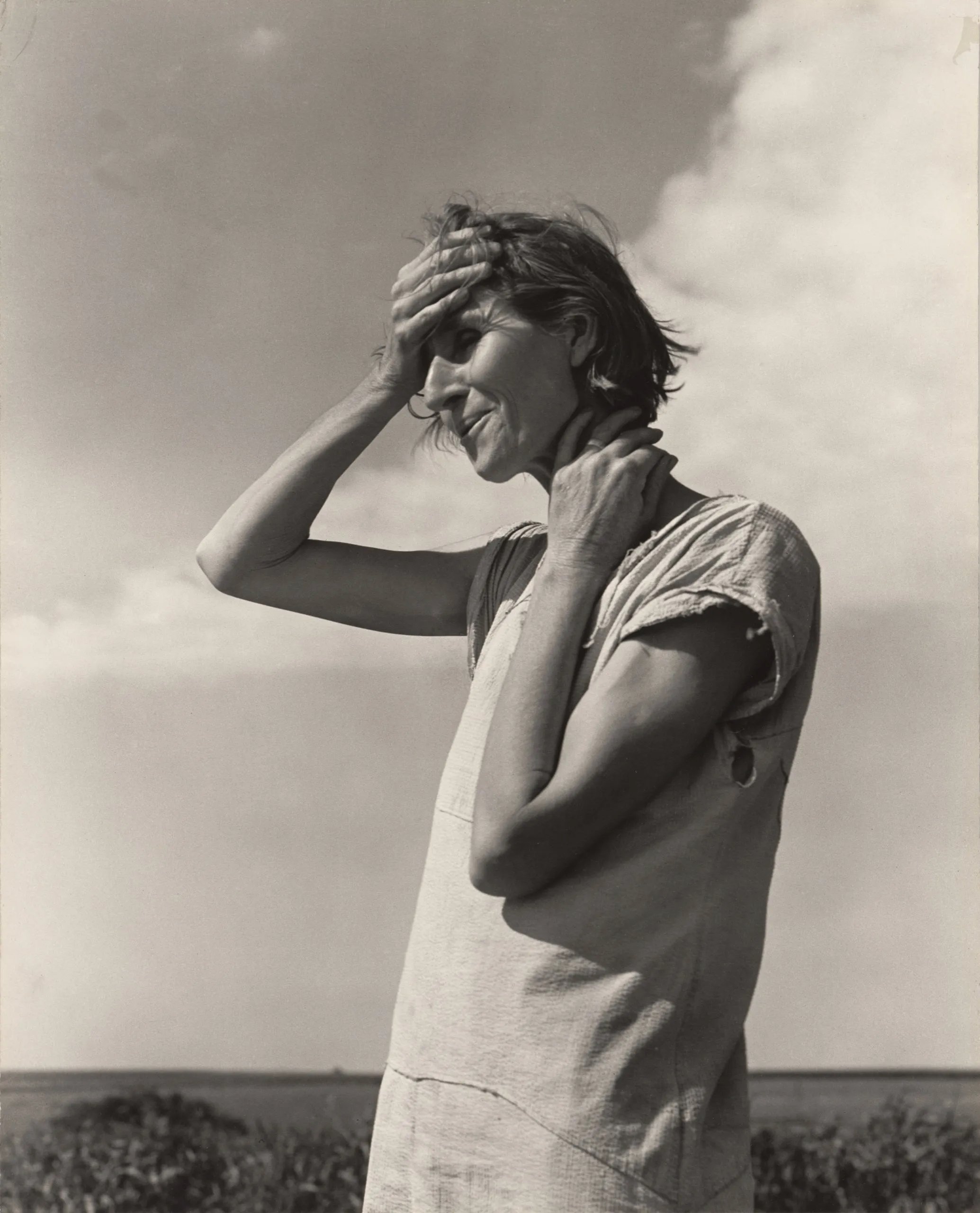
















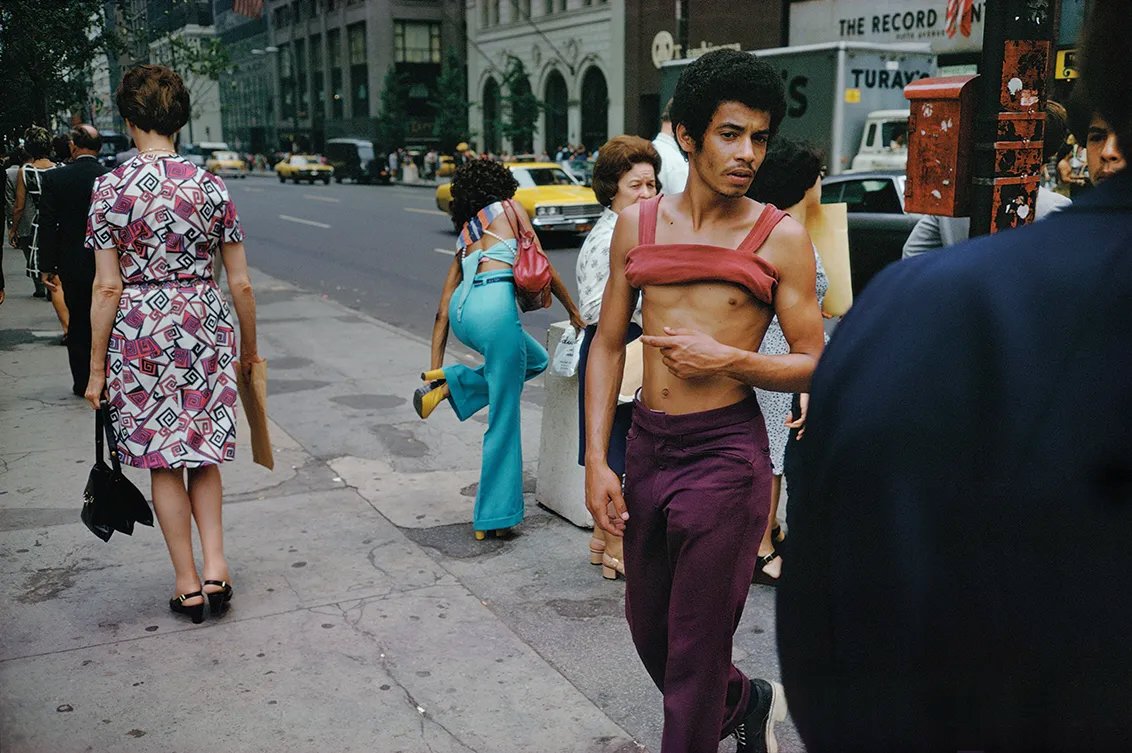







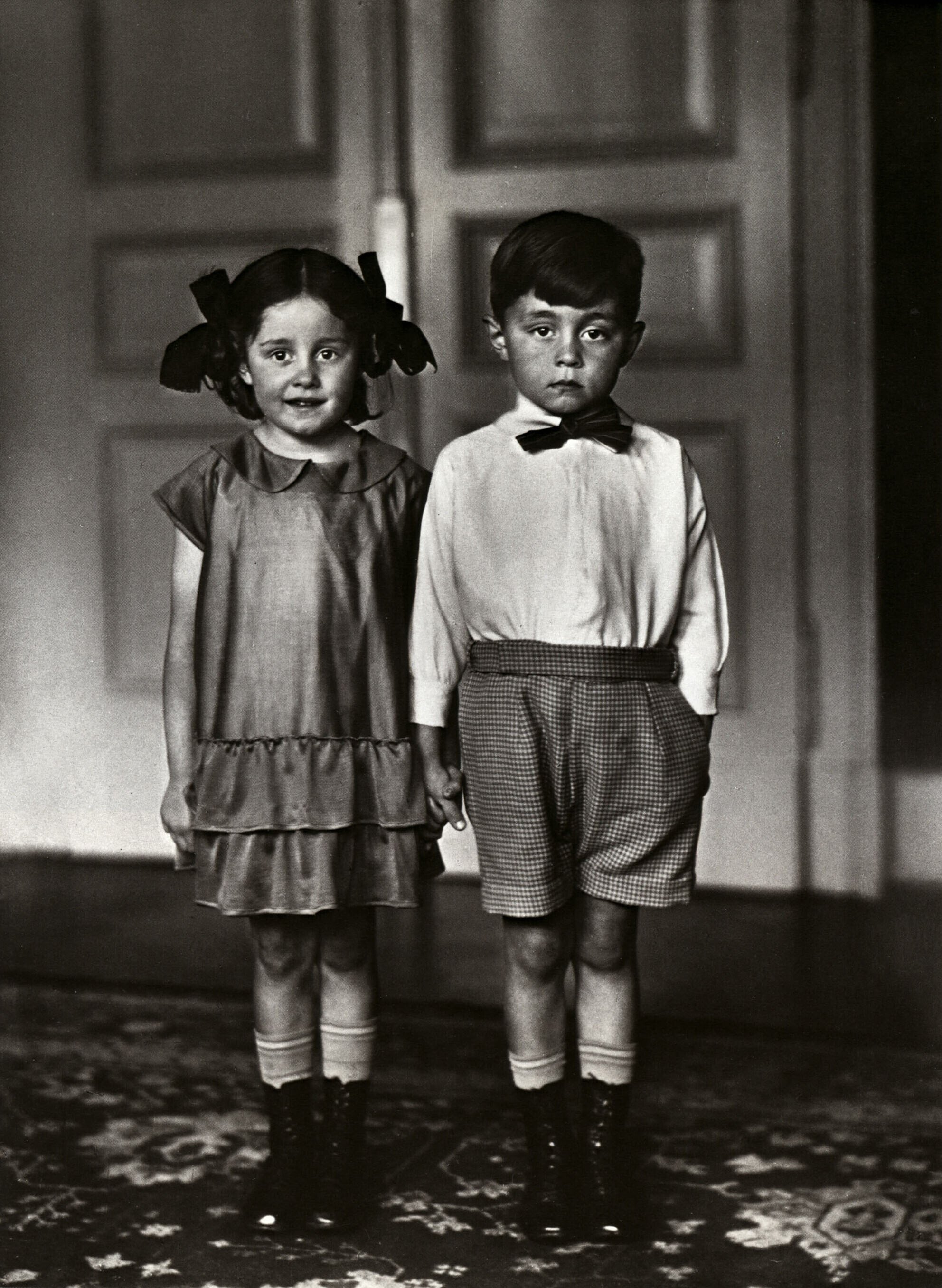





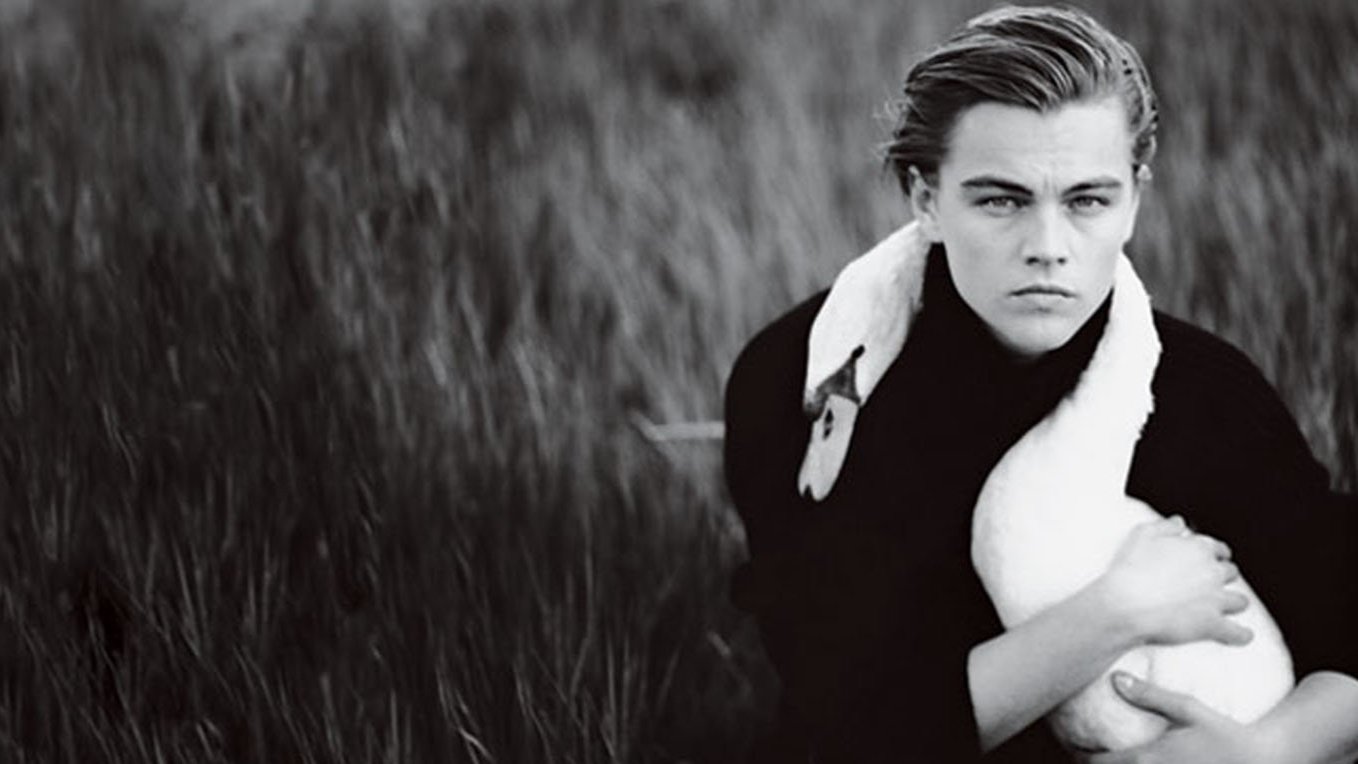
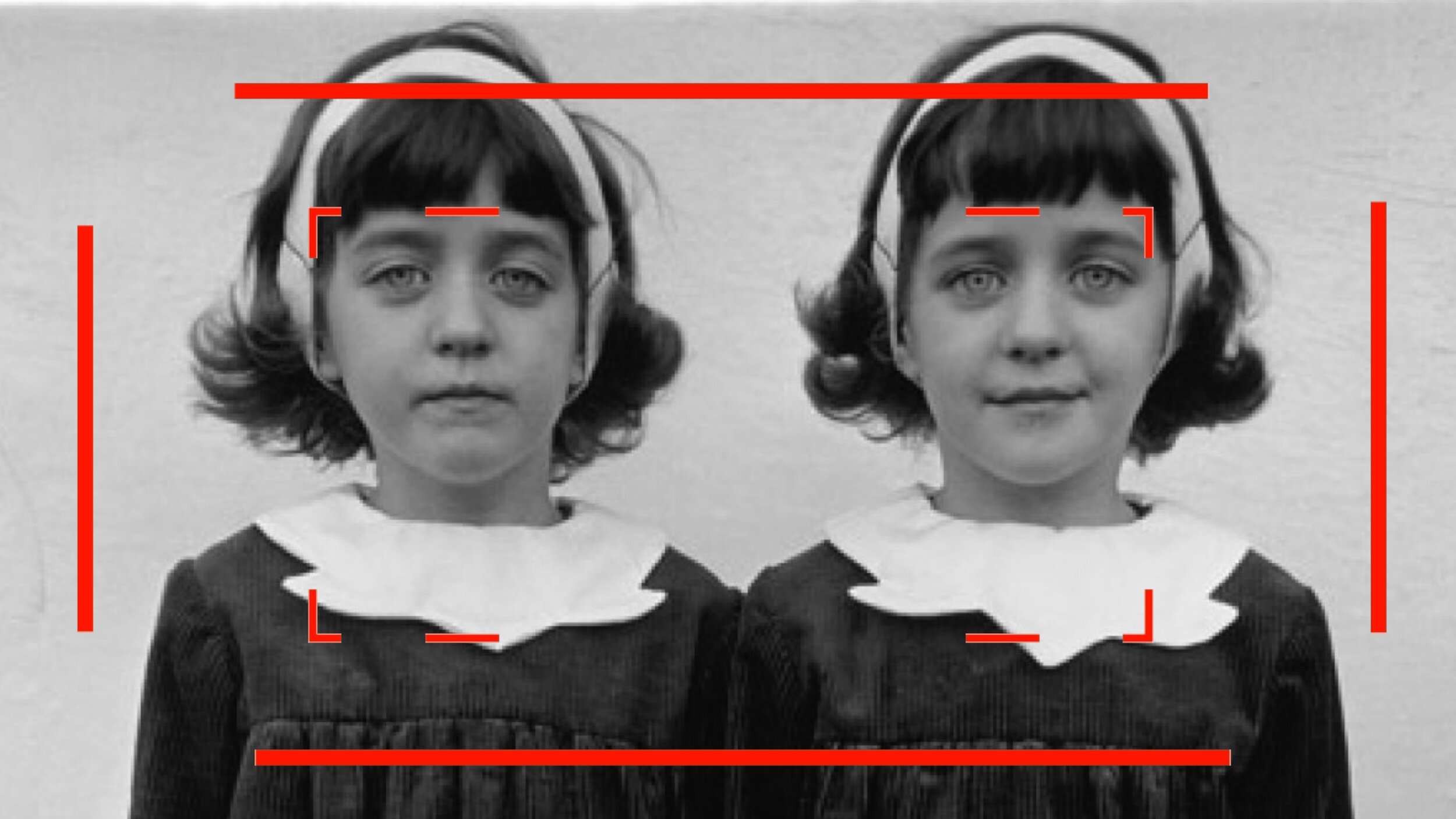
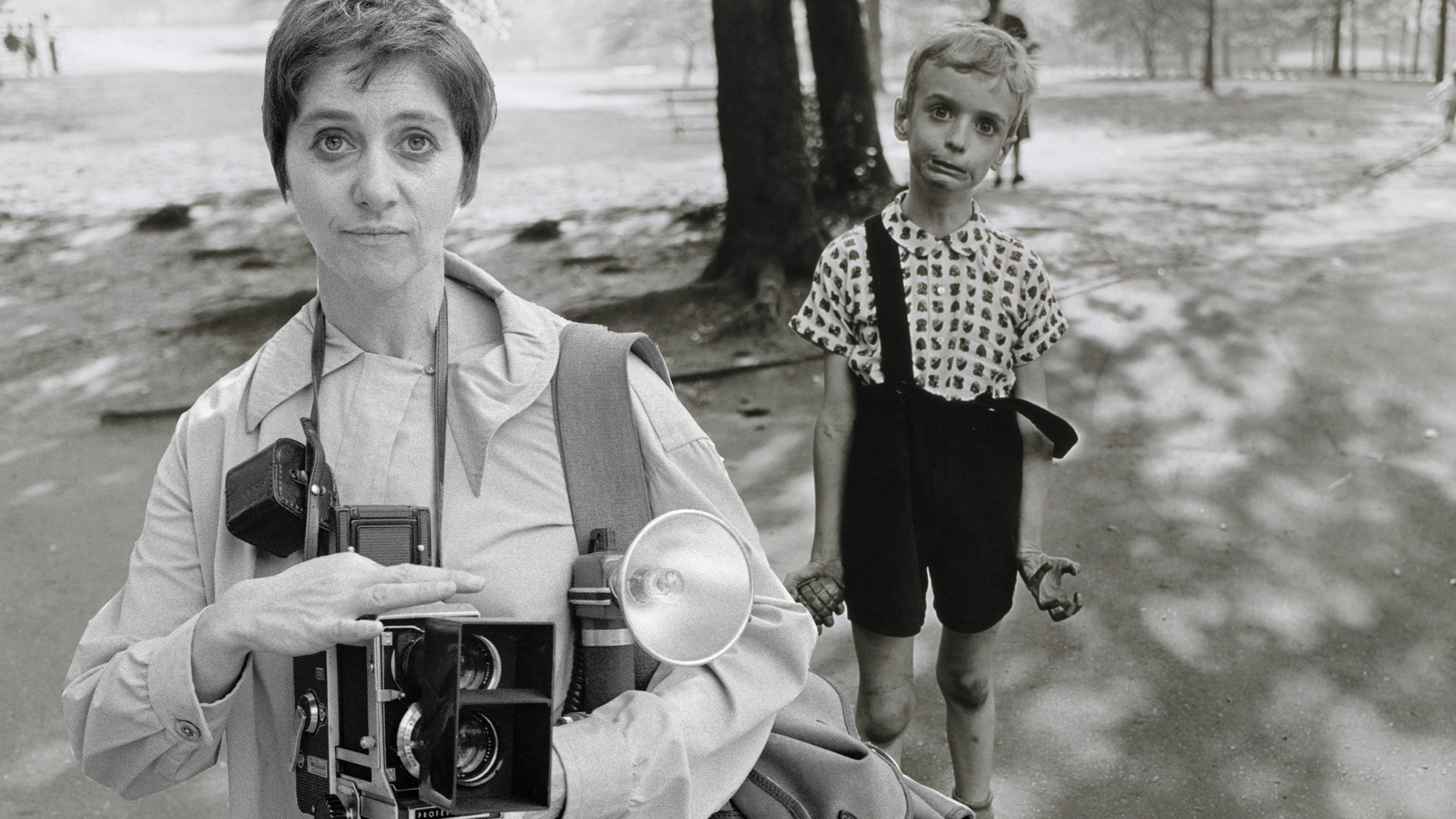













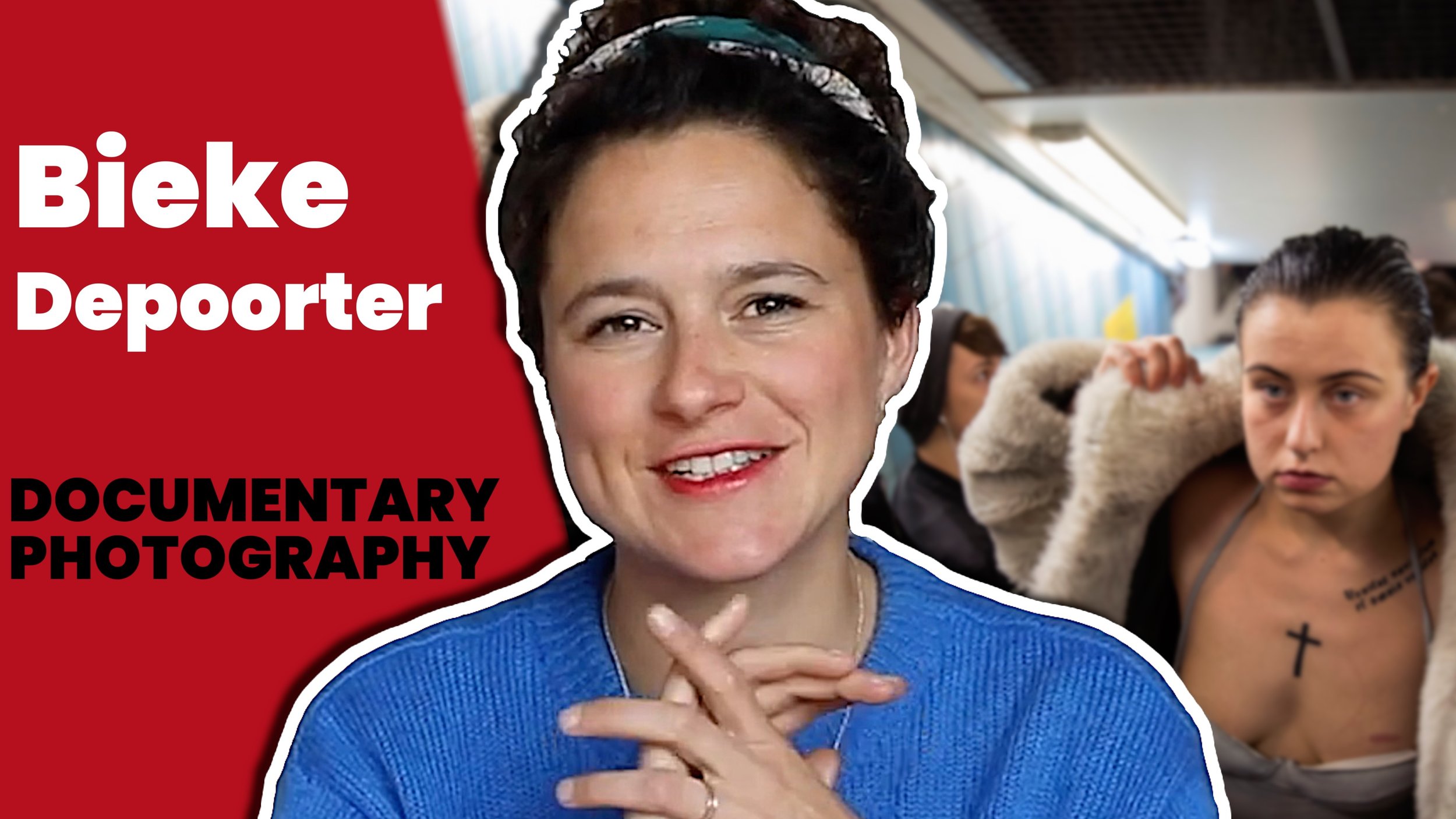
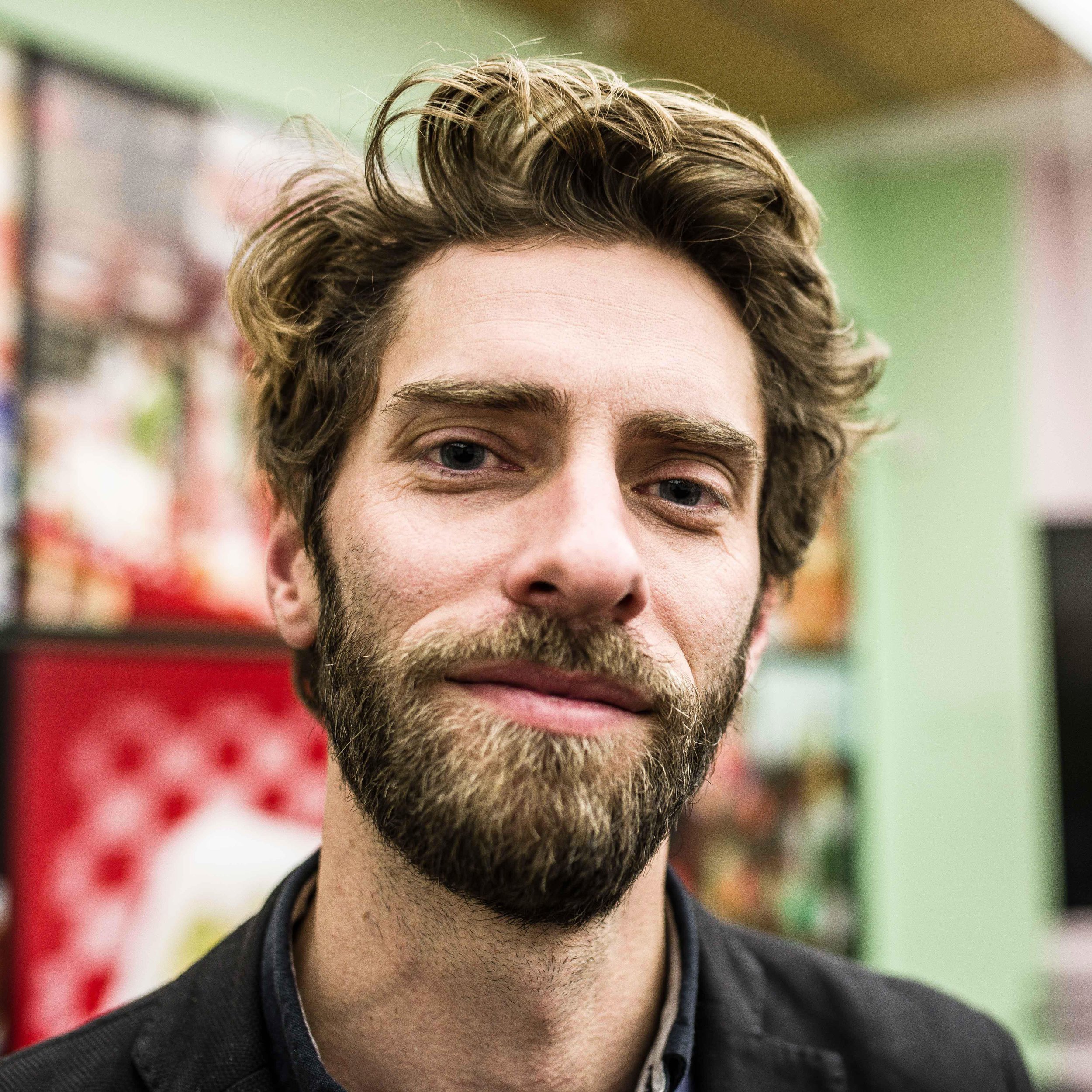







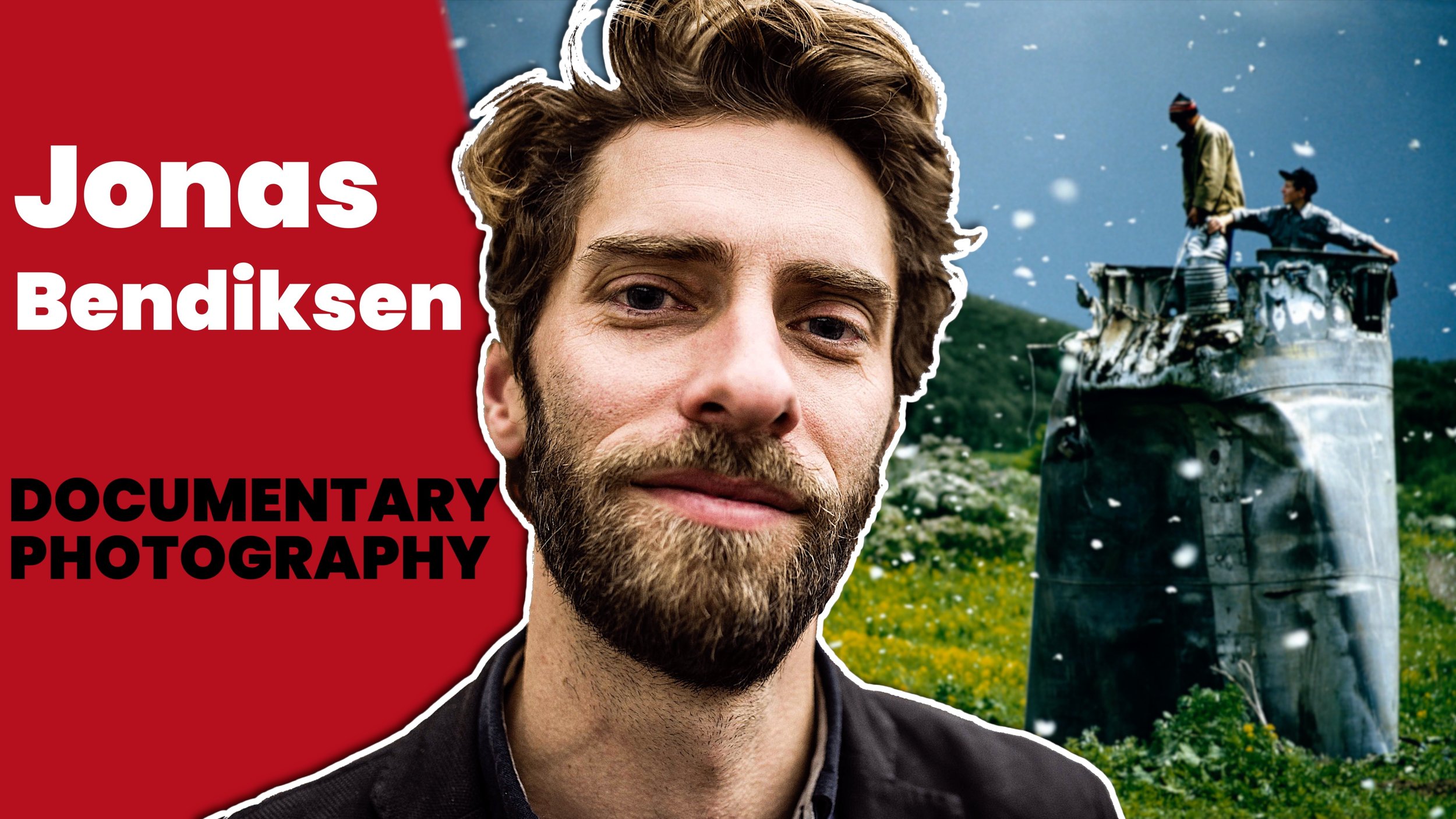








![Martin Parr's advice for better photos[video]](https://images.squarespace-cdn.com/content/v1/5b670534b98a78d5e84a7d19/1709316822341-S7A2G20XX4CL7RHLYW0S/Advice+for+better+photos+Parr+no+text.jpg)
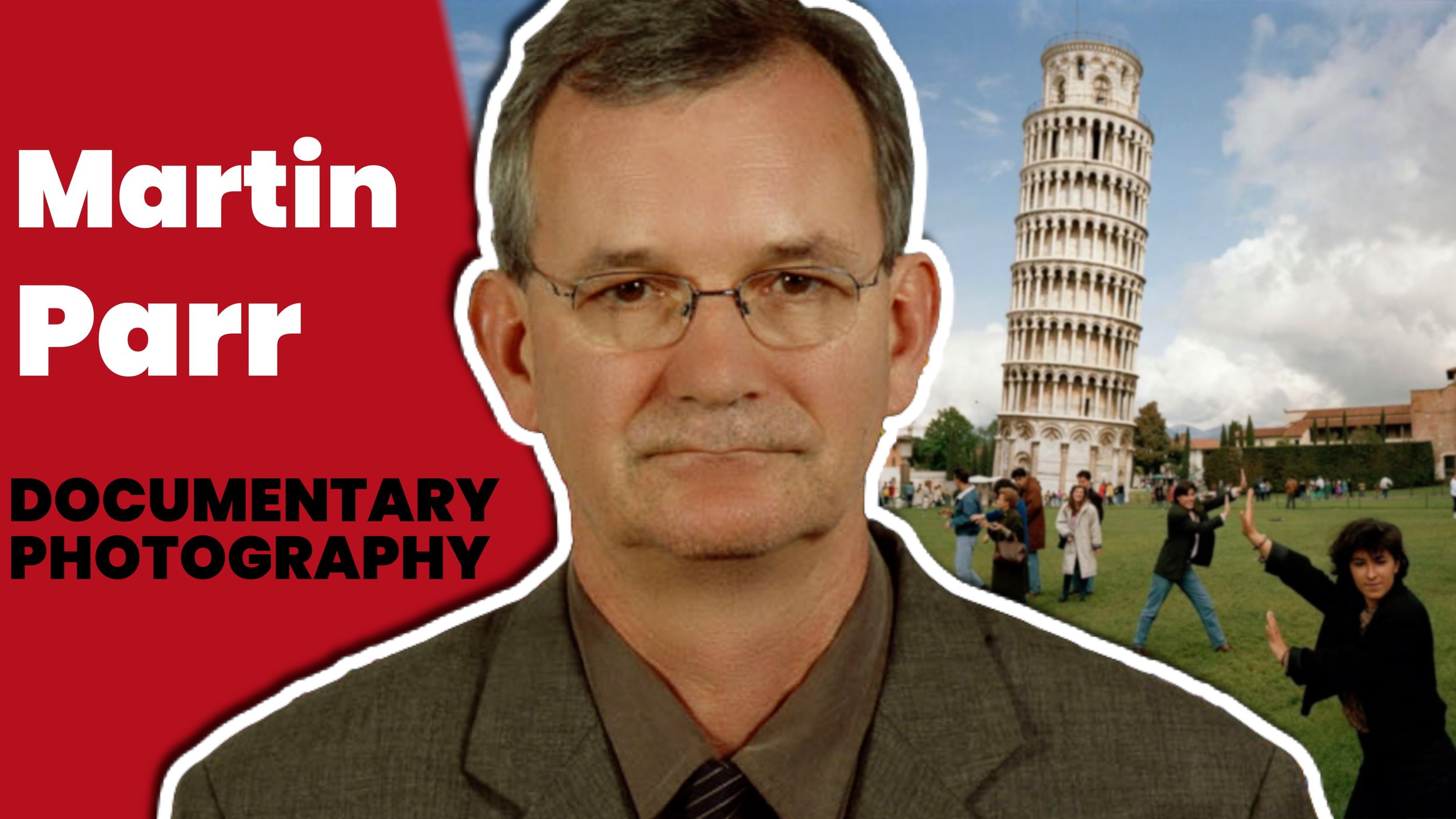

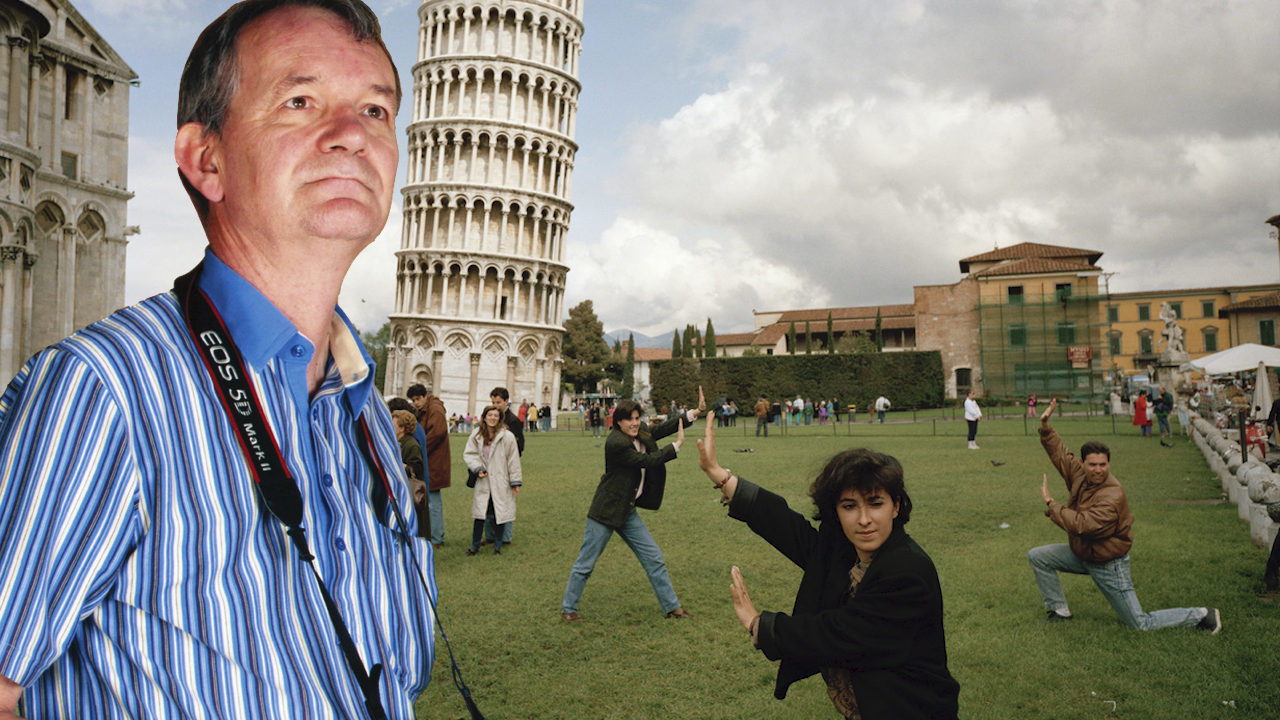
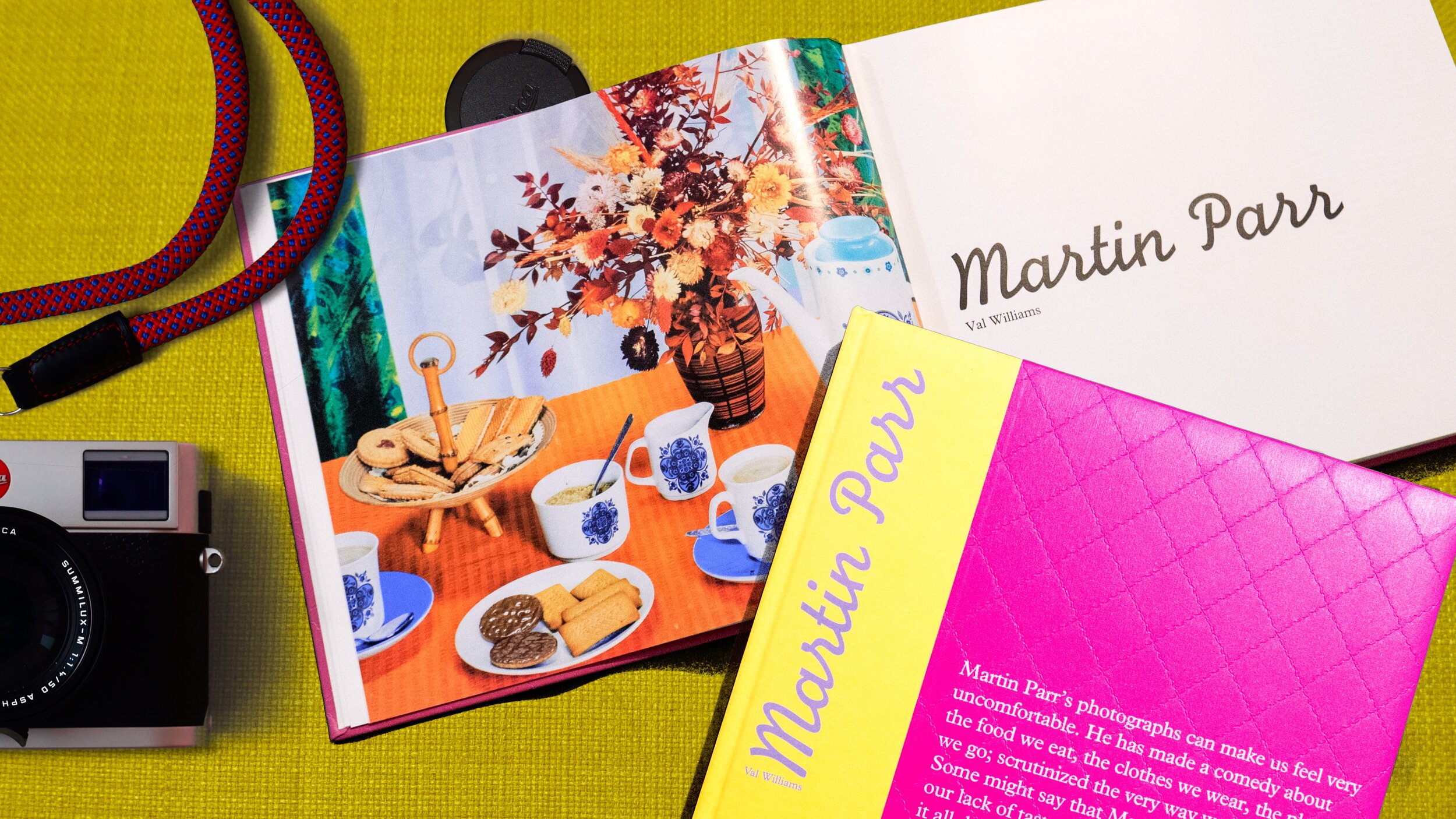








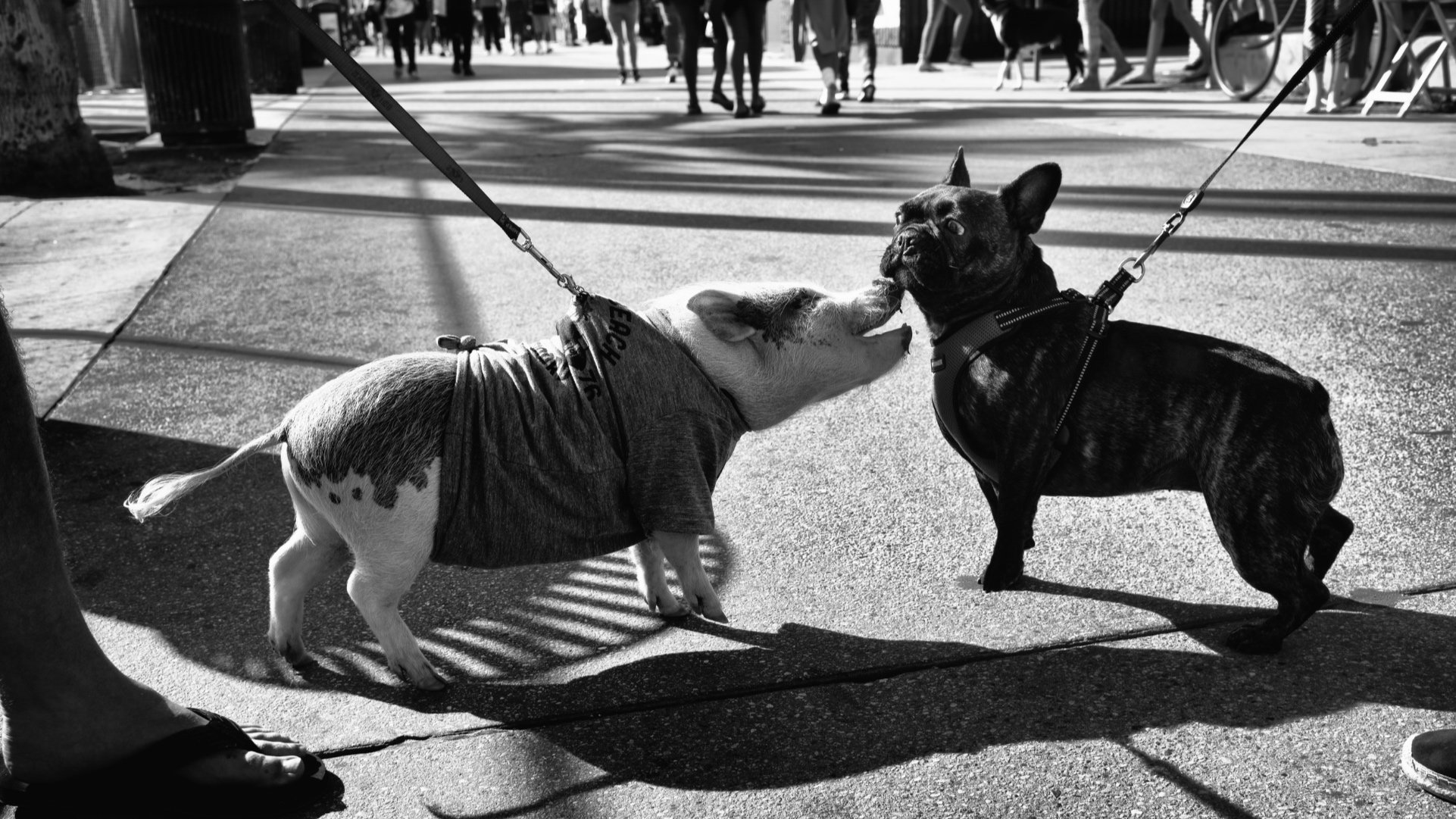
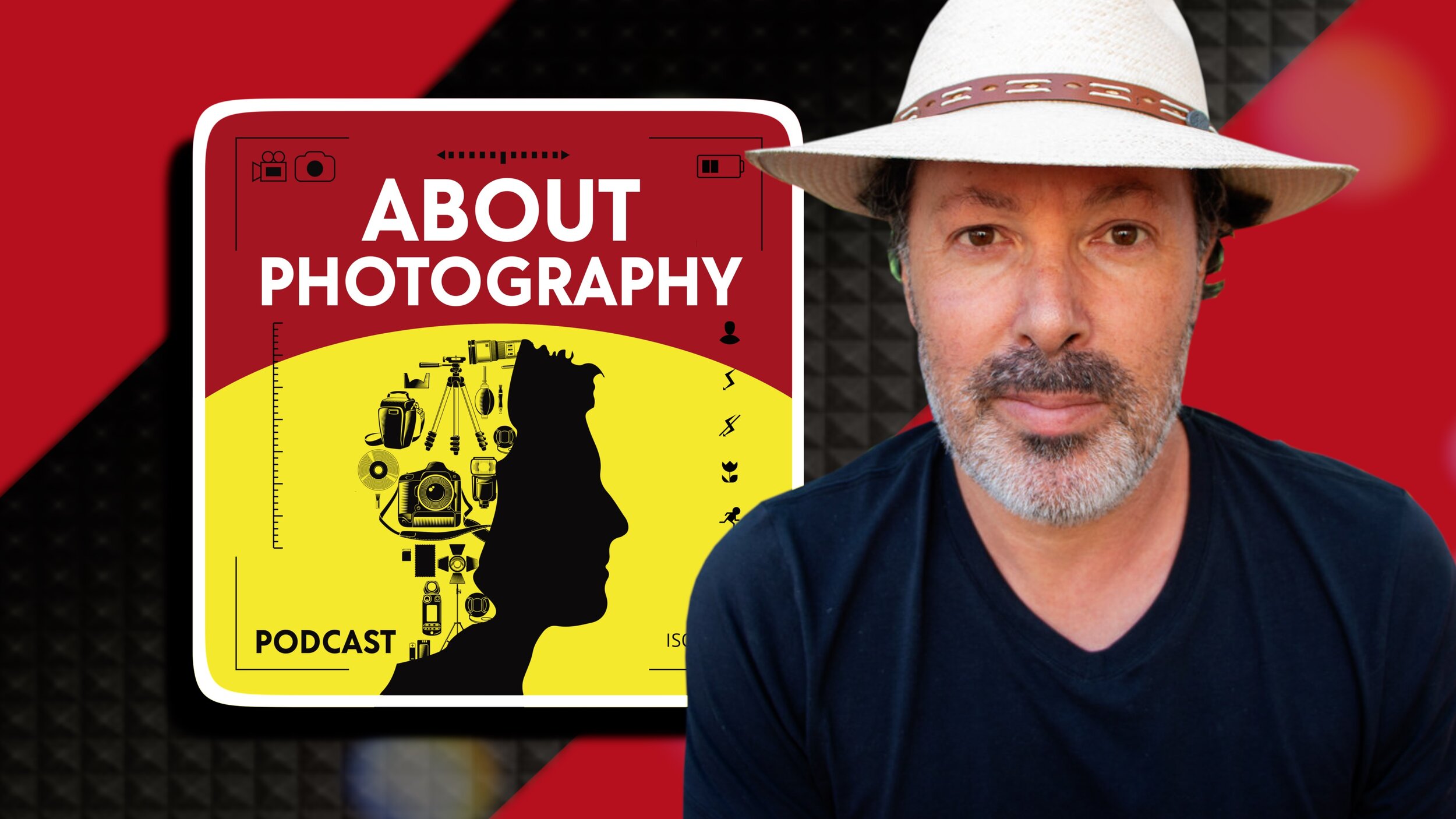








































Did you know that the Migrant Mother which sold for almost 300 thousand USD was almost destroyed when someone from maintenance threw it in the dumpster?